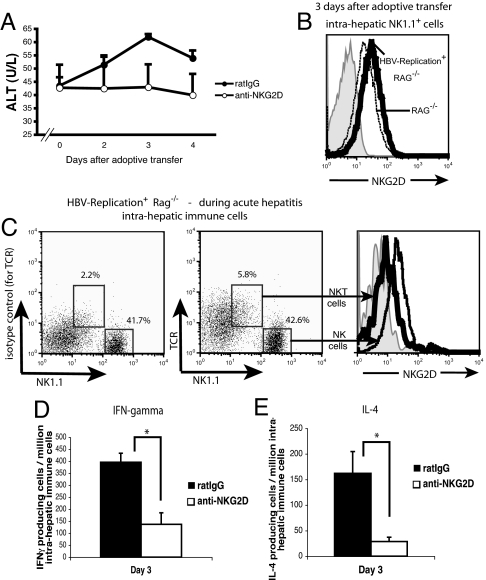Fig. 5.
Blocking an NKG2D–ligand interaction in HBV-Replication+ RAG−/− mice prevents liver injury and cytokine production mediated by the acute immune response to HBV. (A) Serum ALT levels of HBV-Replication+ RAG−/− mice treated with anti-NKG2D mAb (○) or rat IgG (●) at 2, 3, and 4 days after adoptive transfer of 1 × 108 syngeneic splenocytes are shown as mean ± SEM. (B) NKG2D surface expression on intrahepatic NK1.1+ cells from HBV-Replication+ RAG−/− mice (heavy black line) as compared with RAG−/− mice (dotted line) at day 3 after the adoptive transfer of syngeneic naïve splenocytes. Shaded histogram depicts staining using the appropriate isotype-matched control Ig (rat IgG1). (C) Surface expression of NKG2D on intrahepatic NKT (heavy black line) and NK cells (lighter black line) from HBV-Replication+ RAG−/− mice 3 days after adoptive transfer. The left dot plot depicts the isotype-matched control Ig staining of TCR on NKT cells. (D and E) Elispot analyses of IFN-γ (D) and IL-4-producing (E) intrahepatic immune cells from HBV-Replication+ RAG−/− mice treated with rat IgG (black bars) or anti-NKG2D mAb (white bars) at day 3 after adoptive transfer. Representative data are shown as mean ± SD. Student's t test analyses: *, P < 0.001. All data are representative of at least two independent experiments.

